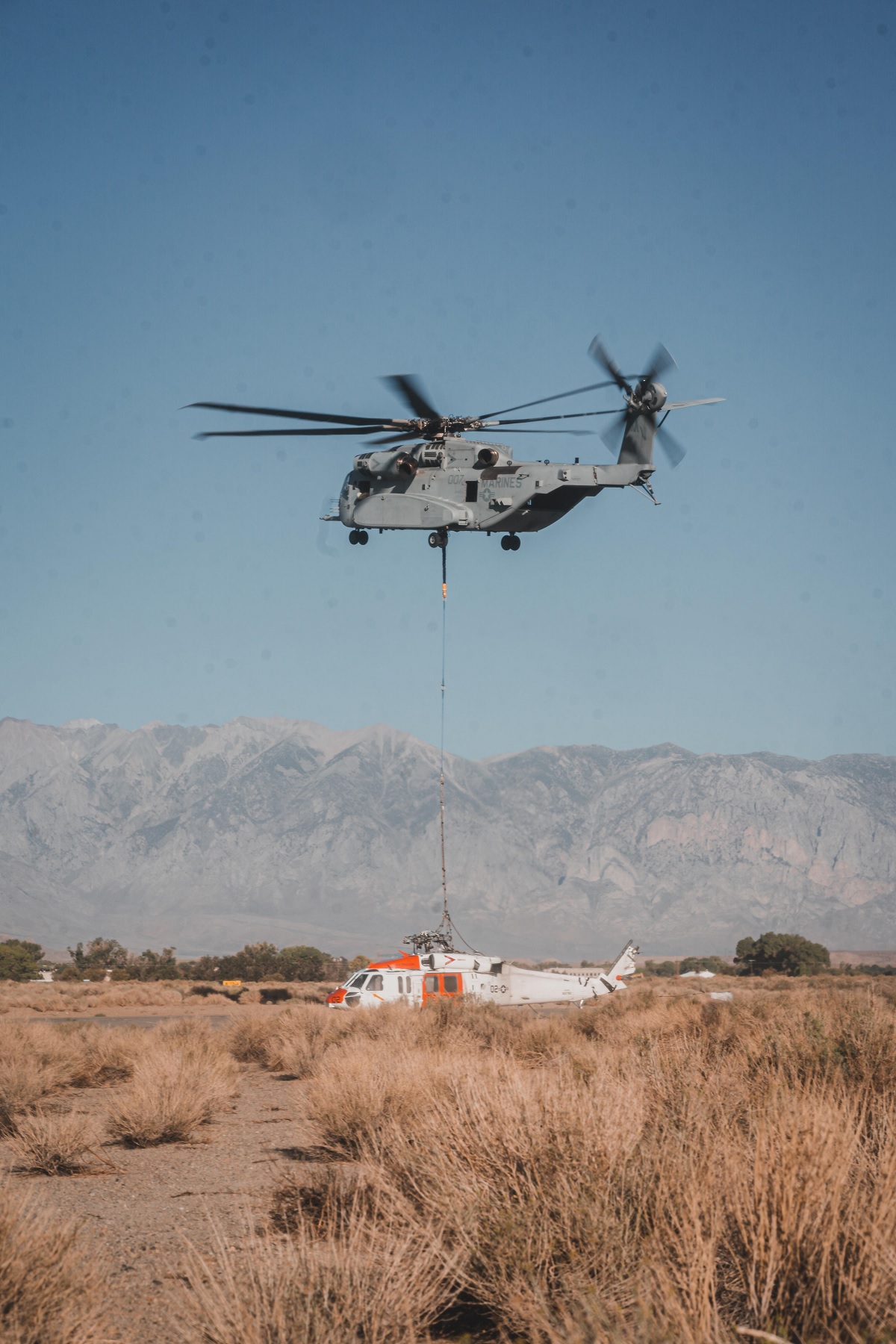VMX-1’s CH-53K detachment quickly examined the environmental conditions and conducted a quick feasibility assessment of support and determined that the King Stallion could conduct the lift.
The CH-53K King Stallion successfully recovered a Navy MH-60S Knighthawk helicopter from Mount Hogue in the White Mountains of California on Sunday, Sep. 5, 2021, Alert5 reported. The two-day operation was the first official fleet mission for the Marine Corps’ new heavy lift capability, which is amid Initial Operational Test and Evaluation with Marine Operational Test and Evaluation Squadron One (VMX-1) at Marine Corps Air Ground Combat Center Twentynine Palms, Ca.
“VMX-1 received a request for assistance from the Naval Safety Center about an MH-60S Knighthawk that suffered a hard landing near Mt. Hogue, Ca., at an elevation of 12,000’ Mean Sea Level (MSL) in July,” said LtCol Luke Frank, CH-53K Detachment Officer in Charge for VMX-1, in a Navair news release.
The MH-60S Knighthawk was sitting on a high-altitude ridge in very rugged terrain near the California-Nevada line on Jul. 16 following a hard landing. The helicopter was supporting a search and rescue effort for a lost hiker. All four crewmembers survived without injury and were rescued the following day.
According to Frank, both the MH-60S unit and the Naval Safety Center had exhausted all other resources for recovery, including Army National Guard, Navy, and Marine Corps fleet squadrons. “They all lacked the capability to lift the aircraft without an extensive disassembly,” he said.
VMX-1’s CH-53K detachment quickly examined the environmental conditions and conducted a quick feasibility assessment of support and determined that the CH-53K could conduct the lift.
The CH-53K is the US Marine Corps’ (USMC) heavy lift replacement for the CH-53E. The most powerful helicopter in the Department of Defense, the CH-53K, is a new-build helicopter that expands the fleet’s ability to move more material, more rapidly throughout the area of responsibility using proven and mature technologies. In Navy high/hot environments, the CH-53K is capable of lifting almost triple the baseline CH-53E lift capability. It is also designed to have a smaller shipboard footprint, lower operating costs per aircraft, and fewer direct maintenance man-hours per flight hour. The USMC’s procurement objective is 200 helicopters.
“After two weeks of exhaustive planning and assembling a team of more than 25 Marines and sailors from VMX-1 and 1st Landing Support Battalion from Camp Pendleton, Ca. we deployed two CH-53Ks to Bishop, Ca., and got to work,” he said.
The CH-53K was designed to lift nearly 14 tons (27,000 lbs) at a mission radius of 110 (203 km) nautical miles in high and hot environments; a capability that expands the service’s range in supporting joint and coalition forces against potential adversaries.
The MH-60S weighed approximately 15,200 lbs. and was positioned in a tight ravine at nearly 12,000’ MSL and needed to be transported over 23 nautical miles to Bishop, Ca. airport.
“After six months of flight operations with the CH-53K, the detachment had every confidence in the aircraft’s abilities to conduct the mission safely. Our main concern was the environmental factors ground support personnel would have to endure,” said Frank.

Photo by Cpl. Therese Edwards / U.S. Marine Corps

